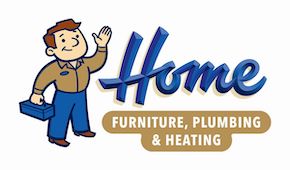Everyone’s always looking to save money on their utility bills, but you should know there’s a way to lower energy use, even when you’re not even home.
The secret is your thermostat. By learning more about its special features and settings, you can structure its daily schedule around your personal preferences. That means you can have different temperature settings for when you’re home, away or even when you’re asleep.
By trying a few of these schedules, you can enjoy comfy temperatures while cutting down your energy bills. Here are some ways your thermostat can be a source of energy savings:
While at Home
When you’re home, you want to enjoy a comfortable temperature. For the most part, you probably have your thermostat lower in the summer while you are in the house to make the most of the cool air.
But the most energy-efficient temperatures for the summer is in fact anywhere between 78 and 80 degrees Fahrenheit. This way, you’ll avoid the worst of summer while still keeping your energy bills low.
While Out of the House
When setting the temperature for a vacation or other trip away from the house, it’s advantageous to set the thermostat higher for while they’re gone.
If your home is located somewhere a little cooler, you can set the thermostat to higher temperatures like 88 degrees while no one is home before you adjust it back to the sweet spot of 78-80 degrees once you’re home again. This way, your air conditioning system isn’t working around the clock to provide cooling for a bunch of empty rooms.
While Asleep
To enjoy a good night’s sleep during the summer, you want a nice cool temperature. You should try and keep things between 68-72 degrees Fahrenheit. There’s less risk of getting too hot or too cold at some point overnight.
Other Strategies for Lowering Energy Use:
- Smart thermostat installation: Switching to a smart thermostat in the summer helps save money on energy costs since it can plan your temperature adjustments according to your lifestyle and home environment. It’ll take care of making changes while you are home or sleeping, while allowing it to get warmer when no one is around. With models like the Lennox iComfort, you can adjust the temperature remotely through your smartphone, tablet or laptop. Scheduling smart thermostat installation in your Kankakee home can be the simplest strategy for maintaining comfortable, yet energy-efficient temperatures even when you aren’t home.
- Upgrade your HVAC system: Upgrading your HVAC system can save money in the long run. By investing in a more energy-efficient system, lower utility bills won’t be far behind since it requires less energy to reach your preferred temperatures. Air conditioning installation in Kankakee is only a phone call away, so don’t hesitate to reach out to local pros like Home Furniture, Plumbing & Heating who can set you up for success.
- Stay on top of routine AC maintenance: Hiring a skilled professional to perform regular air conditioning maintenance in Kankakee can have a serious effect on your total monthly energy use. With regular cleaning of the coils, checking for damage and clearing air vents of dust and debris, you may notice your HVAC system run more efficiently. More efficient operation reduces strain on the unit and lowers operational costs, lowering total energy use and eventually the total monthly bill.
- Replace your air filter regularly: Regularly changing the air filters in your HVAC system saves money by helping air flow efficiently through your air conditioner. When filters become clogged, your air conditioner will have to work harder, and the added strain may impact the system’s life span and lead to breakdowns.
- Confirm your attic is sufficiently insulated: Insulation is a crucial component for any energy-efficient home, securing the hot air outside and the cool air inside through summer. The North American Insulation Manufacturers Association (NAIMA) recommends that homes in the southern United States should install at least 13-14 inches of insulation, while colder climates do better with 16-18 inches.
- Inspect your ventilation: Leaky ductwork can raise your energy bills much more than 20 percent, plus it can affect equipment such as your water heater, clothes dryer and other appliances throughout your home. Watching for signs of leaks and sealing them can fix both of those problems.
- Seal all other leaky spots in your home: Sealing leaky spots in your home with caulk, foam sealant or weather-stripping keeps temperatures a little cooler on hot summer days. It’s also important to check for any gaps around windows, doors and even outdoor fixtures. Devoting time and effort to sealing leaks now can help you save a lot in the long term.
